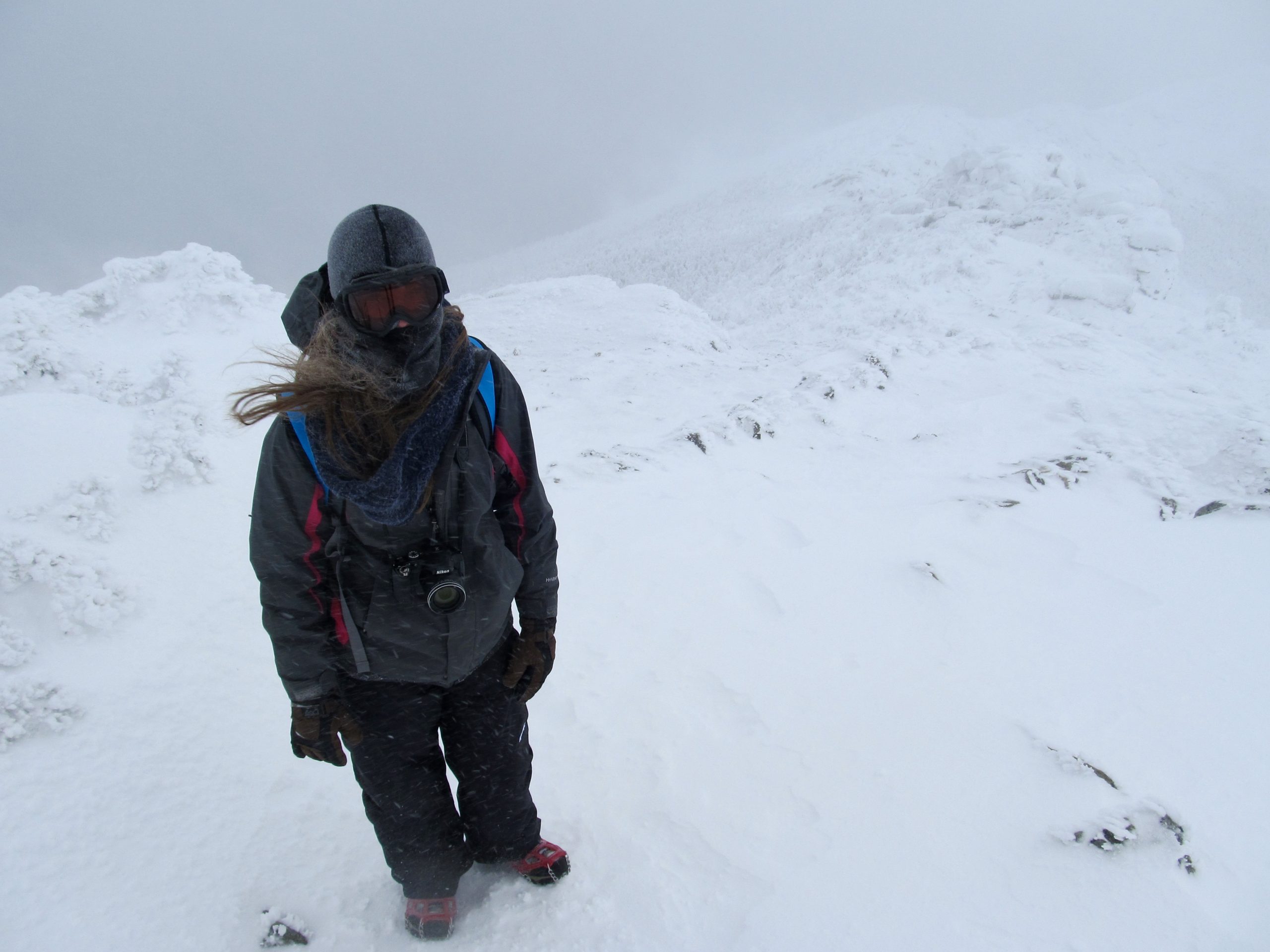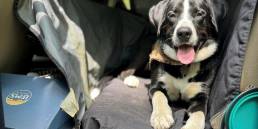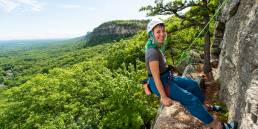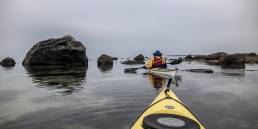Winter adventures present a lot of opportunities for things to go wrong. Whether it’s the snow, or the cold, or the short days, if you’re not 100 percent prepared, it would be easy for a winter adventure to turn into a winter misadventure. And, even if they don’t end up in a shiver bivy, rescue, or injury, we all have those stories of winter trips gone wrong. We asked you to share your stories! What happened and what would you do differently the next time? Or did you swear off winter hiking for good? Share your story here and get a $25 gift card if we publish it.

The archived weather data for February 4th, 2017, as collected by the Mount Washington Observatory, is as follows: max temperature of -1 F, minimum temperature of -11 F, average wind speed of 67.6 mph, and zero minutes of sunshine.
So what, you may ask, were three college students from Connecticut doing in the mountains that day? At that time, I had only been on two winter hikes: Mount Monadnock, in Jaffrey, NH, and Overlook Mountain in the the Catskills. My friend Julia had accompanied me on both of these trips, and we were eager to put our skills to the test on a larger objective: the widely-known Franconia Ridge loop. When we, along with another friend from school, stepped out of the car on that frigid February morning, we donned our shiny new Microspikes and set out on the trail. The ascent of Little Haystack was unproblematic. Sheltered by the forest, Julia and I chugged along at our usual hiking pace, meaning if we didn’t hear our heartbeats in our heads, then we weren’t going fast enough. We felt strong and eager, and I was excited to finally see the White Mountain National Forest dressed in its winter coat.
Somewhere around tree line, we had our first hint of trouble. A couple and their dog were descending the trail, mentioning that the conditions were too intense for their pup. Considering ourselves fairly prepared, we pressed on. But our first true mistake happened soon after. Warmed by our speedy ascent, we had neglected to don our mid layers and shells until after breaching the tree line. With fingers quickly going numb in my sweat-dampened liner gloves, I struggled to zip up my down jacket. I stripped off the damp gloves, zipped up, and found that I couldn’t get my numb fingers back into my gloves correctly. I slipped on a pair of ski mittens (borrowed from my mom and decades old, but still warm as ever) and figured I could go without the liners. We were now bundled in puffies, hard shell jackets, scarves or neck gaiters, winter hats, and ski goggles. We weren’t woefully underprepared. Rather, our mistakes that day were small errors in judgement born from our inexperience.
After everyone had layered up, we continued to the summit of Little Haystack. Standing on the summit, buffeted by wind and blowing snow, we gazed out at the ridge, or at least what we could see of it. Visibility waxed and waned. When the view opened up, I would slip off my mittens, snap a few photos, and then put them back on. Surely, my hands could handle being bared to the elements for a minute or two at a time. At least, that’s what I thought. As we made our way along the ridge, the going became incredibly difficult. Blowing snow obscured everything but the few feet of trail in front of us. Julia’s energy was flagging, and I would periodically stop and wait for her to catch up. At one point, she collapsed against me, hugging me for support. I had my first true feelings of alarm at that point, and I remember doing a silly dance to try to lighten the mood and restore her energy. Meanwhile, I was ignoring my own fatigue and the increasing discomfort in my fingers. I don’t think I had ever experienced cold so intense. Eventually, with some combination of luck and perseverance, we reached the turnoff for the Greenleaf trail and started our descent. The weather relented enough for us to regain some visibility, and we took the opportunity to search our packs for food. Our failure to eat enough and to bring suitable sustenance is painful to look back on. Julia and I had only eaten yogurts before embarking from Connecticut hours before. When we stopped for snacks on the Greenleaf trail, we were shocked to find that the leftover pizza we had brought was frozen solid. While cold pizza is delicious, I cannot speak for frozen pizza, as it was too solid for us to manage a single bite. We located some granola bars that were only slightly less hopeless and ate as we continued the descent. I remember nothing about the descent from that point on. I think that our brains were operating on a primal urge to reach warmth and safety.
I know that at some point we reached the car. I know that I was curled up in the back seat, eyes clenched against the pain as my frozen fingers rewarmed. I know that I texted my mom in a panic, because I had never felt pain from the cold like that before. And I know that eventually, we arrived back in Connecticut. At some point that evening, I noticed that I had developed a small blister on my pinky. That confirmed my fears: by taking off my mittens on the ridge, I had allowed myself to develop frostbite. The responsible thing, here, would have been to seek medical treatment. What I did instead was slap a bandaid over the blister and engage in a night of college debauchery. In the morning, to my horror, the blister had grown and was stuck to the adhesive section of my bandaid. I finally accepted that I needed to go to the infirmary. In the coming days, I went to the infirmary three times. I developed fluid filled blebs on several fingers, and the nurses at the infirmary put long white splints on four of my fingers in the hope that it would keep the blebs from rupturing. (My laughable appearance earned me the nickname “Edwina Scissor Hands” from the nurses). Eventually, my fingers dried out, shed the damaged skin, and recovered. My fingernails remained discolored for weeks as a reminder of my folly, and I was told that I would forever have an increased susceptibility of getting frostbite again. Not long after this, I enrolled in SOLO’s Wilderness First Aid class. I learned how to prevent and treat frostbite (and also that I had done everything wrong while attempting to rewarm my fingers). I even got to share a slideshow of my frostbite pictures with the class in a humbling display of the consequences of poor judgement. Thankfully the nickname awarded me on that occasion, “Frostbite Queen,” was a little cooler than Edwina Scissor Hands. Through my own mistakes and the knowledge gained during the course, I regained confidence in my winter hiking abilities. I know when to layer up, when to eat and what to eat, and when it’s best to turn back. Sometimes a couple mediocre photos just aren’t worth the risk. – Marissa P (@marissapetrozza)
Related Posts
April 24, 2024
What to Bring When Road Tripping with Your Dog
Prepare for the ultimate road trip with…




